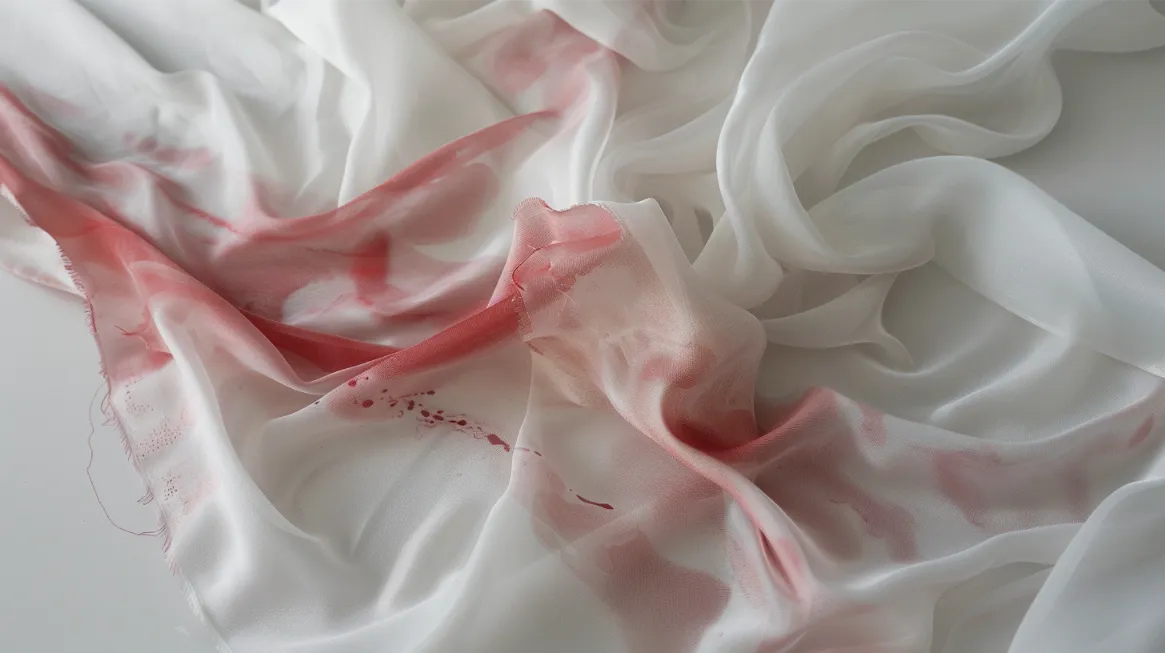Maintaining the pristine condition of dress shirts requires proper care during washing. Following these 7 simple steps, you can ensure your shirts remain crisp and clean.
But what are the specific techniques for sorting, pre-treating, and washing dress shirts? How can you avoid common mistakes that may damage the fabric or alter the fit?
In this discussion, we will explore each step in detail, providing you with the knowledge needed to preserve the quality and longevity of your dress shirts.
Key Takeaways
- Sort shirts by color and fabric type before washing to prevent color bleeding and maintain shirt quality.
- Pre-treat stains with enzyme-based stain removers before washing to eliminate stubborn stains.
- Follow care label instructions and wash shirts on delicate with cold water to protect the fabric and maintain color.
- Promptly dry shirts after washing by hanging them to maintain shape and prevent wrinkles.
Sort Dress Shirts
To ensure proper care and prevent color bleeding, it is important to sort dress shirts by color before washing. This step is crucial in maintaining the quality and appearance of the shirts. Separating delicate fabrics like silk from sturdier materials like cotton is essential to prevent damage during washing. Before placing the shirts in the washing machine, it is advisable to check for any stains or spots that require pre-treatment. Identifying and treating stains beforehand can increase the chances of successful removal during the wash cycle.
When sorting dress shirts, it is also recommended to unbutton all buttons on the shirt. This ensures that the shirt is thoroughly cleaned and prevents the buttons from getting damaged during washing. Moreover, dividing shirts based on fabric type is important to adjust washing settings accordingly. Different fabrics may require specific washing settings to prevent damage and maintain the quality of the shirts.
Unbutton Shirts
Before washing dress shirts, it is important to unbutton them to prevent stress on the buttons and fabric, ensuring thorough cleaning and maintaining the integrity of the shirt’s structure and design. Unbuttoning shirts before washing provides several benefits:
- Thorough cleaning: Unbuttoning allows the detergent and water to reach all parts of the shirt, including the areas hidden by buttons. This ensures that the shirt is cleaned effectively and no dirt or stains remain trapped under the buttons.
- Care for collar stays: Unbuttoning the shirt helps preserve the collar stays. Collar stays are essential for keeping the collar’s shape crisp and intact. Unbuttoning prevents unnecessary stress on the collar stays during washing, ensuring they stay in better shape.
- Effective cleaning of cuffs: Unbuttoning the cuffs allows the water and detergent to penetrate the fabric thoroughly, ensuring that any dirt or grime accumulated on the cuffs is effectively removed.
- Maintaining the shirt’s structure: Unbuttoning before washing helps maintain the shirt’s structure and design. The shirt retains its shape and appearance by relieving stress on the buttons and fabric, ensuring longevity.
Pre-Treat Stains
Pre-treating stains is crucial in ensuring dress shirts’ optimal cleanliness and appearance. You can use an enzyme-based stain remover or a heavy-duty laundry detergent designed for tough stains to effectively pre-treat stains.
Identifying and treating areas where body oils and soil tend to accumulate, such as the collar insides, is important. These areas can be treated by applying the stain remover directly and allowing it to sit for about 10 minutes to break down the stains effectively.
Additionally, it is essential to check the underarm areas for deodorant build-up and treat them with a suitable stain remover before washing the shirt.
Add Detergent to Wash
For optimal cleaning results, selecting a high-quality liquid detergent suitable for the fabric of the dress shirt is essential. When it comes to adding detergent to your wash, there are a few key considerations to keep in mind:
- Read the care label on the shirt: Before adding detergent, take a moment to check the care label on the dress shirt. This will provide valuable information on the fabric type and specific washing instructions.
- Determine the recommended amount: The care label will also indicate the recommended amount of detergent needed for a proper wash. Following these guidelines ensures that you use an appropriate amount for effective cleaning.
- Avoid excessive sudsing: While adding extra detergent for a more thorough cleaning might be tempting, this can lead to excessive sudsing. Too many suds can prevent proper agitation and rinsing, resulting in less effective washing.
- Remove dirt and stains: The right amount of detergent is crucial for removing dirt, oils, and stains from your dress shirts. The recommended amount ensures the detergent can lift and remove these particles during the wash cycle.
Wash on Delicate
When it comes to ensuring the longevity and quality of your dress shirts, washing them on a delicate cycle is a crucial step. Delicate washing involves gentle agitation and lower spin speeds to protect the shirt’s quality. This setting suits delicate fabrics such as silk or wool shirts. You can maintain your dress shirt’s shape, color, and overall integrity by washing it on a delicate cycle. However, it is important to read the care label before proceeding to ensure that the shirt is suitable for washing on a delicate cycle.
Delicate washing not only helps protect the quality of the shirt but also ensures that it remains in good condition for longer. The gentle agitation and lower spin speeds prevent excessive wear and tear on the fabric, buttons, and collars. This is especially important for delicate fabrics that a regular washing cycle’s harsh movement and high spin speeds can easily damage.
Use Cold Water
Using cold water when washing dress shirts is essential for maintaining color and preventing shrinkage. It is particularly important when dealing with delicate materials like silk or wool, as cold water is gentler on these fabrics.
Additionally, cold water is effective in removing stains without causing damage to the shirt, making it a practical and energy-efficient choice.
Temperature: Cold Water
To maintain the color, size, and quality of your dress shirts, it is recommended to wash them in cold water. Cold water offers several benefits when it comes to washing your dress shirts:
- Prevents color fading: Cold water helps to prevent color fading, ensuring that your dress shirts retain their vibrant hues for longer.
- Ideal for delicate fabrics: Cold water is gentle on delicate fabrics like silk and wool, preventing any potential damage that hot water may cause.
- Preserve buttons and collars: Washing dress shirts in cold water helps to preserve the integrity of buttons and collars, preventing any loosening or damage.
- Maintaining quality and longevity: Using cold water to ensure your dress shirts maintain their quality over time, extending their lifespan and saving you money in the long run.
Fabric Care: Delicate Materials
Washing them in cold water is essential to care for delicate materials such as silk and wool properly. Cold water helps prevent damage and shrinkage, ensuring the longevity of these fabrics.
Delicate materials require special attention during washing, and using cold water is crucial in fabric care. Experts recommend cold water washing to preserve the integrity and quality of delicate dress shirts made from silk or wool.
Stain Removal: Pre-treating Techniques
When effectively removing stains from delicate dress shirts, one crucial step is pre-treating techniques using cold water. Pre-treating stains before washing can prevent them from setting into the fabric and increase the chances of successful removal.
Here are some key tips for pre-treating stains on dress shirts:
- Use enzyme-based stain removers or heavy-duty detergents for effective pre-treatment.
- Allow the stain remover to sit for at least 10 minutes before washing to break down the stain.
- Focus on areas like collar insides and underarms where body oils and deodorant build-up are common.
- Proper pre-treatment before washing can help eliminate stubborn stains and maintain the overall quality of your dress shirts.
Take Out and Dry Immediately
Drying the dress shirt immediately after washing is crucial to prevent wrinkles from setting in.
Removing the shirt from the washing machine and hanging it on a hanger allows it to air dry efficiently and eliminates any moisture that could lead to damp odors.
Prompt Drying Prevents Wrinkles
To prevent wrinkles and maintain the crispness of your dress shirts, it is essential to remove them promptly from the washer and hang them to air dry immediately. By removing your dress shirts and allowing them to air dry, you can avoid the wrinkles that can set in if they are left sitting in the washer.
Hanging dress shirts to dry on a hanger helps maintain their shape and structure, reducing the need for excessive ironing. Additionally, prompt drying prevents dampness in the fabric, which can lead to musty odors if left in the washer.
Eliminate Moisture to Maintain
To maintain the crispness and prevent wrinkles in your dress shirts, removing them promptly from the washer and hanging them to air dry immediately is crucial. This step is essential for eliminating moisture and preserving the quality of your shirts.
By removing water-soluble stains and following the care instructions, you can ensure that your shirts remain pristine. After removing the shirts from the washer, remove the collar and hang the shirt on a hanger to air dry.
Line drying allows for proper ventilation and faster drying, minimizing the risk of mildew and musty odors. Once the shirt is completely dry, iron it to achieve a polished look.
Properly drying and maintaining your cotton dress shirts will extend their lifespan and keep them looking their best.
Quick Action Prevents Damage
When it comes to maintaining the quality of your dress shirts, taking prompt action after washing is crucial, remove the shirt from the washer immediately after the cycle is complete to prevent damage and preserve the shirt’s quality.
Quick action is essential to prevent wrinkles and maintain the shirt’s shape. After removing the shirt, air drying is recommended to prevent further damage. Hanging the shirt on a hanger allows for proper air circulation and helps retain its shape.
Avoid leaving wet dress shirts in the washer, which can lead to mildew or musty odors. You can ensure their appearance and longevity by taking out and drying your dress shirts promptly.
Frequently Asked Questions
How Do You Wash a Dress Shirt?
To wash a dress shirt, unbutton all buttons and collar stays. Sort shirts by color and fabric type. Use cold water and gentle detergent. Avoid overloading the machine. Air dry on a hanger.
Should You Button Dress Shirts When Washing?
Buttoning dress shirts when washing is recommended to maintain their shape and prevent misshapen collars and cuffs. It helps retain the shirt’s structure, keeps it in place, and reduces the risk of damage to buttons, ultimately preserving the garment’s quality and appearance.
How Do You Wash Uniform Shirts?
To properly wash uniform shirts, it is important to follow the care instructions on the label, use appropriate detergents and washing settings, pre-treat stains, and avoid hot water or harsh cycles that could damage the fabric.
How Do You Get Stains Out of Dress Shirts?
To effectively remove stains from dress shirts, it is important to pre-treat the affected areas with an enzyme-based stain remover or heavy-duty laundry detergent. Allow the product to work for at least 10 minutes before washing for optimal results.










